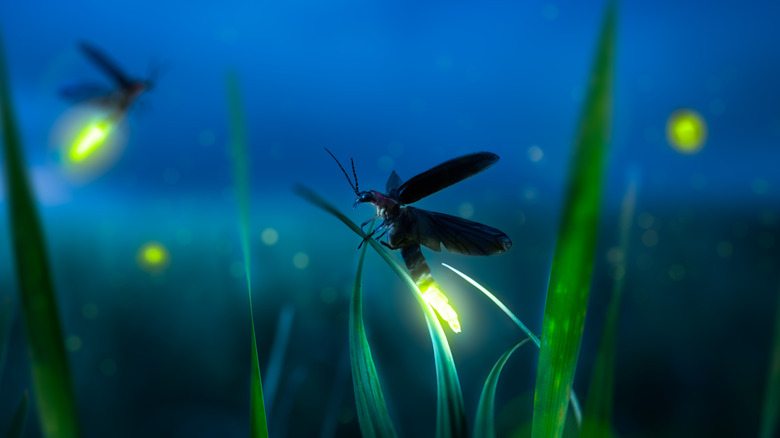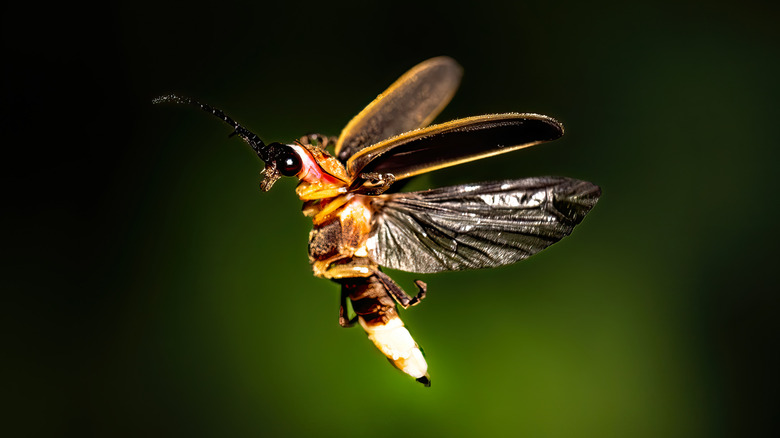What Makes Lightning Bugs Glow?
If you're in a garden, meadow, park, or woodland during the summer, you might see the area light up in the evening. The magical glow in the air is likely the work of fireflies or lightning bugs — a type of bug that glows in the dark — as the area grows darker with the sun setting. It's common for kids to chase after these beetles (which aren't actually flies) and catch them to put in jars for illuminating entertainment. But, have you wondered how lightning bugs produce this glow? It's a chemical reaction called bioluminescence, and fireflies might be the best example of this phenomenon.
By definition, bioluminescence is a type of chemiluminescence that occurs with living things. In lightning bugs, it's the result of combining oxygen with adenosine triphosphate, calcium, and luciferin — the latter of which is the chemical that actually produces the light. Luciferin is the byproduct of the enzyme luciferase when it mixes with oxygen, and how the chemical is arranged affects the color of the light, which is yellow in these nocturnal flying insects. This cold light from fireflies is different from that of light bulbs, which generate more thermal radiation. If the bioluminescence produced heat in the same way, the beetles wouldn't survive.
Why do lightning bugs glow?
The cool thing about animals that emit their own light is that some of them — such as fireflies — can control it, and it's often how those animals communicate. By regulating how much oxygen enters the lantern (light organ) through tracheoles — a complex series of tubes that get progressively smaller — the beetles can start and stop the chemical reaction. It's probable that lightning bugs developed this trick as a way to deter predators. Now, however, they mostly use the chemical reaction as a mating signal.
Every species of lightning bug has its own signal, and when it comes to most of them in North America, it's how you can tell a female firefly apart from a male firefly. Generally, the males fly at a precise height and time of night, making their lanterns flash at a unique sequence to their species. Meanwhile, the females watch from the ground or nearby vegetation (such as blades of grass), flashing back with the appropriate signal to attract the males. Females and males who are attracted to each other reciprocate their signals and may eventually mate.
Some firefly species will spend hours flashing their lanterns, but others may only flash for 20 minutes or so. There are even certain male lightning bugs that flash in sync, and others that may use the chemical reaction to communicate with each other for various purposes. On top of that, not all firefly species use light to communicate. These day-flying beetles use pheromones for mating instead.

